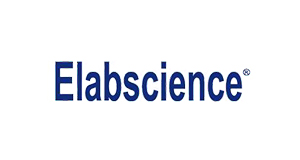Recombinant Mouse S100B Protein (His Tag)
Recombinant Mouse S100B Protein (His Tag)
Artikelnummer
ELSPDEM100004-20
Verpackungseinheit
20 µg
Hersteller
Elabscience Biotechnology
Verfügbarkeit:
wird geladen...
Preis wird geladen...
Abbreviation: S100B
Target Synonym: Protein S100-B;S-100 protein beta chain;S-100 protein subunit beta;S100 calcium-binding protein B;S100b;S100 beta;S100 calcium binding protein B
Target Species: Mouse
Expression Host: E.coli
Fusion Tag: C-His
UNIProt ID: P50114
Background: S100-B, is an acidic protein with a molecular weight of 21 kDa belonging to the S100 family. S100-B contains two EF-hand-type calcium-binding motifs separated by a hinge region with a hydrophobic cleft. S100-B plays an important role in neurodevelopment, differentiation, and brain construction. S100-B has neuroprotective effects, but at high concentrations S100-B is neurotoxic. Extracellular concentration of S100-B increases following brain damage, which easily penetrates into cerebrospinal fluid in brain damage and then into the blood. S100-B is expressed and produced by astrocytes in vertebrate brains and in the CNS, and the astrocytes are the major cells producing S100-B protein in gray matter, as well as oligodendrocytes are the predominant S100-B in protein producing cells in white matter. The major advantage of using S100-B is that elevations in serum or CSF levels provide a sensitive measure for determining CNS injury at the molecular level before gross changes develop, enabling timely delivery of crucial medical intervention before irreversible damage occurs. In addition, S100-B, which is also present in Mouse melanocytes, is a reliable marker for melanoma malignancy both in bioptic tissue and in serum.
Sequence: Met1-Glu92
Purity: > 95 % as determined by reducing SDS-PAGE.
Formulation: Lyophilized from a 0.2 um filtered solution of 20mM PB, 150mM NaCl, pH 7.4.
Normally 5 % - 8 % trehalose, mannitol and 0.01% Tween80 are added as protectants before lyophilization.
Please refer to the specific buffer information in the printed manual.
Endotoxin: < 1.0 EU per ug of the protein as determined by the LAL method.
Target Synonym: Protein S100-B;S-100 protein beta chain;S-100 protein subunit beta;S100 calcium-binding protein B;S100b;S100 beta;S100 calcium binding protein B
Target Species: Mouse
Expression Host: E.coli
Fusion Tag: C-His
UNIProt ID: P50114
Background: S100-B, is an acidic protein with a molecular weight of 21 kDa belonging to the S100 family. S100-B contains two EF-hand-type calcium-binding motifs separated by a hinge region with a hydrophobic cleft. S100-B plays an important role in neurodevelopment, differentiation, and brain construction. S100-B has neuroprotective effects, but at high concentrations S100-B is neurotoxic. Extracellular concentration of S100-B increases following brain damage, which easily penetrates into cerebrospinal fluid in brain damage and then into the blood. S100-B is expressed and produced by astrocytes in vertebrate brains and in the CNS, and the astrocytes are the major cells producing S100-B protein in gray matter, as well as oligodendrocytes are the predominant S100-B in protein producing cells in white matter. The major advantage of using S100-B is that elevations in serum or CSF levels provide a sensitive measure for determining CNS injury at the molecular level before gross changes develop, enabling timely delivery of crucial medical intervention before irreversible damage occurs. In addition, S100-B, which is also present in Mouse melanocytes, is a reliable marker for melanoma malignancy both in bioptic tissue and in serum.
Sequence: Met1-Glu92
Purity: > 95 % as determined by reducing SDS-PAGE.
Formulation: Lyophilized from a 0.2 um filtered solution of 20mM PB, 150mM NaCl, pH 7.4.
Normally 5 % - 8 % trehalose, mannitol and 0.01% Tween80 are added as protectants before lyophilization.
Please refer to the specific buffer information in the printed manual.
Endotoxin: < 1.0 EU per ug of the protein as determined by the LAL method.

 English
English










